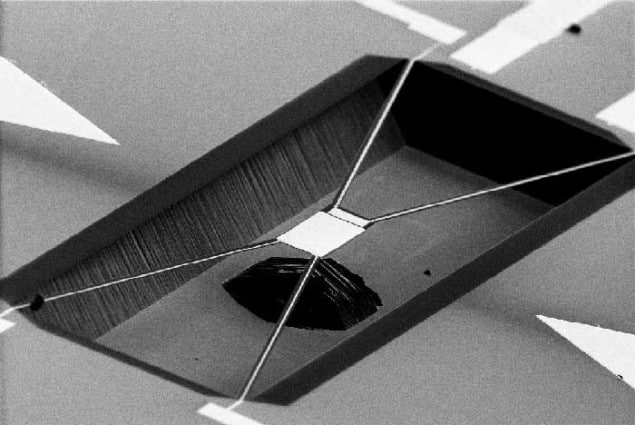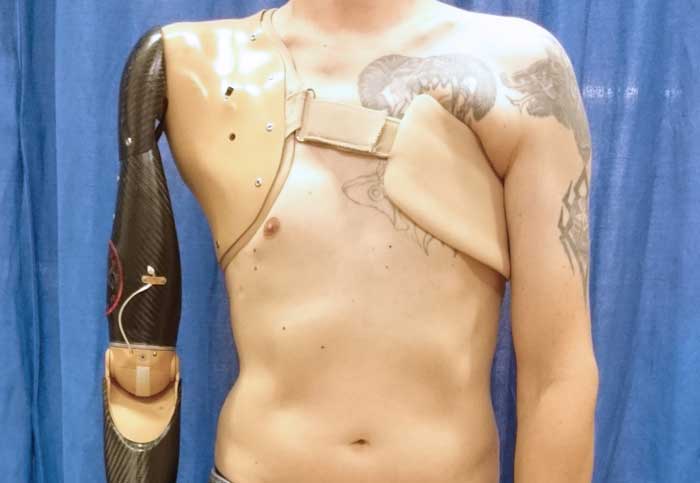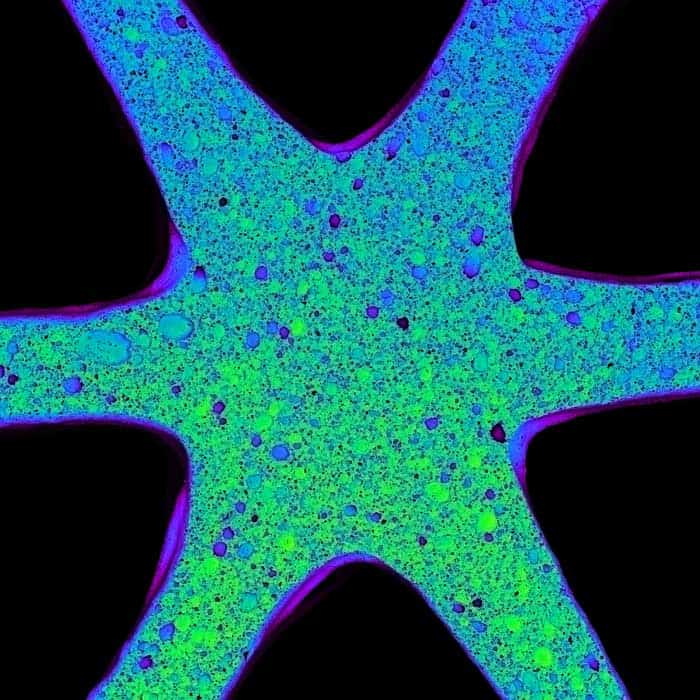Flash Physics is our daily pick of the latest need-to-know developments from the global physics community selected by Physics World‘s team of editors and reporters

Single gold atoms conduct heat like a metal
Single atoms of gold conduct heat according to the same physical law as larger pieces of the metal. That is the conclusion of researchers at IBM Research in Zurich, Switzerland, who have confirmed that the Wiedemann–Franz law applies to thermal contacts comprising just one gold atom. Dissipating heat in electronic circuits is becoming more difficult as devices become smaller and operate at higher frequencies, and therefore it is crucial to understand how heat is conducted along atomic-scale connections. The majority of heat transfer in a metal is done by the conduction electrons, which means that the thermal conductance of a metal is proportional to its electrical conductance – the Wiedemann–Franz law. While this law holds for bulk metals, it has proven difficult to confirm that it applies to nanometre- and atomic-scale structures. Making such measurements is particularly tricky for single-atom contacts because the electrical conductance is quantized. Now, Nico Mosso, Bernd Gotsmann and colleagues have addressed these challenges using a scanning tunnelling microscope (STM) with an atomically sharp gold tip that is brought into contact with a heated gold surface. Writing in Nature Nanotechnology, the researchers describe how they measured the thermal and electrical conductance of the tip as it was placed in thousands of different locations on the surface. While the conductances were different in different locations, the relationship between the two values obeyed the Wiedemann–Franz law. The measurement is also the first to make a direct link between quantized electrical conductance and quantized thermal conductance. The team now plans to use the set-up to measure the effect of lattice vibrations on heat conduction in tiny connections.
Robotic prosthetic senses phantom arm movements

A new prosthetic arm could give amputees a full range of hand and arm function by detecting nerve signals. An international team has developed a sensor that can detect electrical signals from the nervous system and then interpret the signals to move a prosthetic arm. Currently available robotic prosthetics are controlled by movements in the remaining muscles. These remnant muscles are often damaged, which limits the prosthetics to simple grasp commands. The study in Nature Biomedical Engineering gets around this problem by focusing on the nervous system rather than muscles. The researchers, led by Dario Farina of Imperial College London in the UK, worked with six volunteers who had amputations from either the shoulder or just above the elbow. The volunteers had surgery to re-route nerves from the peripheral nervous system (nerves outside of the spine and brain) that would normally connect with the arm and hand. The nerves were instead directed to healthy muscles either in the bicep or chest depending on the amputation. A sensor patch made of high-density, flexible electrode grids then detects electrical signals from the re-routed nerve cells. The team decoded and mapped the signals using computer models and then compared them with those in healthy patients. As a result, they were able to program the prosthetic to respond to specific signals that were triggered by the patient thinking about phantom arm and hand commands. Although the work needs further refinements and clinical trials, the study is a proof-of-concept and the scientists hope that the robotic prosthetic will be on the market within three years, and they will be able to offer full movement to amputees.
3D printed structure mimics plant porosity

A new 3D printed material takes inspiration from plant structures. By using ceramic foam ink, scientists at Harvard University and Massachusetts Institute of Technology (MIT) in the US have developed a method of printing 3D structures with both macro- and microscale structures. In nature, there are many extraordinary materials that have similar structures. Grass, for example, has a hollow tubular macrostructure with a porous microstructure. This means the plant can recover after compression and support its own weight. Jennifer Lewis and team looked to mimic this architecture to create strong, lightweight materials. Using a ceramic foam ink containing alumina particles, water and air, they printed a triangular honeycomb structure that had microporous walls. The ink and printed structure were both tested and tuned to optimize density and stiffness. Other foam inks can be made from polymers and metals, and the resulting lightweight material could be used for thermal insulation or tissue scaffolds. The work is presented in Proceedings of the Natural Academy of Science.
- You can find all our daily Flash Physics posts in the website’s news section, as well as on Twitter and Facebook using #FlashPhysics. Tune in to physicsworld.com later today to read today’s extensive news story on and atomtronic battery.



